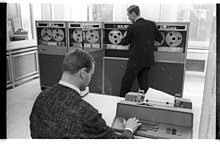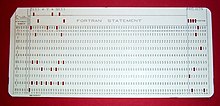Computer Operation Level-3 Suggestion V-9
Written Test Computer Operation Level-3 Suggestion V-9 by Job Edu BD
First, test yourself with the following MCQs, if you can’t do it, you can check the answer by clicking on the answer button.
Computer Operation Level-3 Suggestion V-9
1. Which of the following is not valid version of MS Office?
- Office XP
- Microsoft Outlook
- Office 2007
- Office 2016
2. A character that is raised and smaller above the baseline is known as
- Subscript
- Raised
- Indicator
- Superscript
3. Which of the following function key activates the speller?
- F2
- F9
- F7
- Shift + F7
4. MS OFFICE Is Application Software
- True
- False
5. Thesaurus tool in MS Word is used for…
- Spelling suggestions
- Synonyms and Antonyms words
6. Which option in File pull-down menu is used to close a file in MS Word?
- Save
- Open
- Close
- Exit
7. What is the function of Ctrl + B in Ms Word
- It applies Italic formatting the selected text
- It adds a line break to the document
- It makes tho selected text bold
- It converts selected text into the next larger size of the same font
8. Why are headers and footers used in document?
- To enhance the overall appearance of the document
- To mark large document more readable
- To mark the starting and ending of a page
- To allow page headers and footers to appear on document when it is printed
9. What is the maximum number of lines you can set for a drop cap?
- 10
- 13
- 08
- Undefined
10. What is place to the left of horizontal scroll bar?
- Save buttons
- View buttons
- Tab stop buttons
- Exit buttons
11. What is the collection of worksheets called?
- Ledger
- Book
- Textbook
- Wordbook
12. The total number of rows in worksheet?
- Unlimited
- 65,536
- 1,048,576
- 1,0685,76
13. Which chart type is used to visually compare values across a few categories?
- Area chart
- Bar chart
- Doughnut chart
- Hierarchy chart
14. Which command is used to open PowerPoint directly (if installed) from the RUN Dialog box in windows operating systems?
- Powerpoint
- Powerpnt
- Ppt
- Pptx
15. What is the keyboard shortcut to start the slideshow of a PowerPoint presentation?
- F5
- Ctrl+F5
- F12
- Ctrl+F12
16. Correct steps to protect a PowerPoint presentation with password ?
- Tools>protect presentation>encrypt with password
- File>info>protect presentation> encrypt with password
- File>more options> protect presentation>encrypt with password
- All of the above
17. A typical modern computer uses?
- Valves
- Lst chips
- Vacuum tubes
- All of these
18. Arpanet stands for?
- Advanced rehearse projects agency network
- Advanced research projects agency nework
- Advanced research projects agency network
- None of these
19. A______ is a central device that devides a network connection among several devices.
- Switch
- Hub
- Router
- Modem
20. To create an ID Card using word processing software, Which is most important?
- Insert and modify shape
- Page layout
- Insert header and footer and modify them
- Insert and modify picture
21. Which ribbon includes the command for inserting charts that illustrate or compare data?
- Draw
- Home
- Insert
- Design
22. Excel is a___ program developed by Microsoft.
- Speedsheet
- Document
- Date management
- All of the above
23. Which Logical Funcation Returns True if all arguments valuate TRUE;FALSE if not?
- OR
- AND
- IF
- ANDIF
24. Which Function is used to create a date with year, month and day?
- DATE()
- DATEIF()
- DATEVALUE()
- CURDATE()
25. What is the meaning of “booting” in the system?
26. Mention the use of snipping tool.
27. What Does the orientation option under the page layout tab allow to change?
28. Write down “ঞ্জ” in bijoy Unicode.
29. How do I fix a printer in printing error?
30. What do you mean by Unicode?
1. Which of the following is not valid version of MS Office?
B. Microsoft Outlook
2. A character that is raised and smaller above the baseline is known as
D. Superscript
3. Which of the following function key activates the speller?
C. F7
4. MS OFFICE Is Application Software
A. True
5. Thesaurus tool in MS Word is used for…
B. Synonyms and Antonyms words
6. Which option in File pull-down menu is used to close a file in MS Word?
C. Close
7. What is the function of Ctrl + B in Ms Word
C. It makes tho selected text bold
8. Why are headers and footers used in document?
D. To allow page headers and footers to appear on document when it is printed
9. What is the maximum number of lines you can set for a drop cap?
A. 10
10. What is place to the left of horizontal scroll bar?
B. View buttons
11. What is the collection of worksheets called?
D. Wordbook
12. The total number of rows in worksheet?
C. 1,048,576
13. Which chart type is used to visually compare values across a few categories?
B. Bar chart
14. Which command is used to open PowerPoint directly (if installed) from the RUN Dialog box in windows operating systems?
B. Powerpnt
15. What is the keyboard shortcut to start the slideshow of a PowerPoint presentation?
A. F5
16. Correct steps to protect a PowerPoint presentation with password ?
B. File>info>protect presentation> encrypt with password
17. A typical modern computer uses?
B. Lst chips
18. Arpanet stands for?
C. Advanced research projects agency network
19. A__________________ is a central device that devides a network connection among several devices.
B. Hub
20. To create an ID Card using word processing software, Which is most important?
A. Insert and modify shape
21. Which ribbon includes the command for inserting charts that illustrate or compare data?
C. Insert
22. Excel is a__________ program developed by Microsoft.
D. All of the above
23. Which Logical Function Returns True if all arguments valuate TRUE;FALSE if not?
B. AND
24. Which Function is used to create a date with year, month and day?
A. DATE()
25. What is the meaning of “booting” in the system?
Ans: Booting in the system means a computer is to load an operating system(os) into the computer’s main memory or ram.
26. Mention the use of snipping tool.
Ans: To take a snapshot from a document or images from all or part of my pc screen.
27. What Does the orientation option under the page layout tab allow to change?
Ans: It allows you to switch between portrait and landscape page orientations.
28. Write down “ঞ্জ” in bijoy Unicode.
Ans: ঞ্জ= ( ঞ+জ)
29. How do I fix a printer in printing error?
Ans: Unplug and restart your printer.
Sometimes power cycling your printer can resolve the issue. …
Check cables or wireless connection. …
Uninstall and reinstall your printer. …
Install the latest driver for your printer. …
Clear and reset the print spooler. …
Change a printer’s status to “online”
30. What do you mean by Unicode?
Ans: Unicode is an international character encoding standard that provides a unique number for every character across languages and scripts, making almost all characters accessible across platforms, programs, and devices.
"You will pass just by asking the mentioned questions, it's not like that at all, but chances are upto 80% to get common. This is just a suggestion. This question is not copied from any board question"
Here are 50 common MS Word shortcut keys that can help improve your productivity while using the software:
1. Ctrl + A: Select all
2. Ctrl + B: Bold text
3. Ctrl + C: Copy selected text or object
4. Ctrl + D: Open the Font dialog box
5. Ctrl + E: Center text
6. Ctrl + F: Open the Find and Replace dialog box
7. Ctrl + G: Open the Go To dialog box
8. Ctrl + H: Open the Find and Replace dialog box (Replace tab)
9. Ctrl + I: Italicize text
10. Ctrl + J: Justify text
11. Ctrl + K: Insert hyperlink
12. Ctrl + L: Left-align text
13. Ctrl + M: Indent a paragraph from the left
14. Ctrl + N: Create a new document
15. Ctrl + O: Open a document
16. Ctrl + P: Print a document
17. Ctrl + Q: Remove paragraph formatting
18. Ctrl + R: Right-align text
19. Ctrl + S: Save a document
20. Ctrl + T: Create a hanging indent
21. Ctrl + U: Underline text
22. Ctrl + V: Paste copied text or object
23. Ctrl + W: Close a document
24. Ctrl + X: Cut selected text or object
25. Ctrl + Y: Redo an action
26. Ctrl + Z: Undo an action
27. Ctrl +1]: Increase font size
28. Ctrl + [: Decrease font size
29. Ctrl + Shift + D: Double underline text
30. Ctrl + Shift + F: Change font
31. Ctrl + Shift + G: Open the Word Count dialog box
32. Ctrl + Shift + H: Apply hidden text formatting
33. Ctrl + Shift + K: Apply the Format as Small Caps
34. Ctrl + Shift + L: Apply the List style
35. Ctrl + Shift + M: Remove a paragraph indent from the left
36. Ctrl + Shift + N: Apply the Normal style
37. Ctrl + Shift + P: Change the font size
38. Ctrl + Shift + Q: Apply the Quote style
39. Ctrl + Shift + S: Apply the Styles task pane
40. Ctrl + Shift + T: Decrease a hanging indent
41. Ctrl + Shift + W: Underline words but not spaces
42. Ctrl + Shift + X: Change the case of selected text
43. Alt + Ctrl + 1: Apply Heading 1 style
44. Alt + Ctrl + 2: Apply Heading 2 style
45. Alt + Ctrl + 3: Apply Heading 3 style
46. Alt + Ctrl + C: Copy formatting
47. Alt + Ctrl + R: Copy the format of selected text
48. Alt + Ctrl + T: Insert a current date and time
49. Alt + Shift + D: Insert a current date
50. Alt + Shift + T: Insert a current time
A computer operator is a role in IT which oversees the running of computer systems, ensuring that the machines, and computers are running properly. The job of a computer operator as defined by the United States Bureau of Labor Statistics is to “monitor and control … and respond to … enter commands … set controls on computer and peripheral devices. This Excludes Data Entry.”
Overview
The position has evolved from its beginnings in the punched card era. A Bureau of Labor Statistics report published in 2018 showed that, in the public sector, a major employer of those categorized as Computer Operator was United States Postal Service. In the private sector, companies involved in data processing, hosting, or related services employed computer operators at an even higher rate. The states with the highest employment for computer operators, as of 2018, are: New York, Texas, California, New Jersey, and Florida.
Job role description
The former role of a computer operator was to work with mainframe computers which required a great deal of management day-to-day including manually running batch jobs; however, now they often work with a variety of different systems and applications. The computer operator normally works in a server room or a data center, but can also work remotely so that they can operate systems across multiple sites. Most of their duties are taught on the job,[citation needed] as their job description will vary according to the systems they help to manage.
Responsibilities of a computer operator may include:
- Monitor and control electronic computer and peripheral electronic data processing equipment to process business, scientific, engineering, and other data according to operating instructions.
- Monitor and respond to operating and error messages.
- May enter commands at a computer terminal and set controls on computer and peripheral devices.
- Excludes “Computer Occupations” (15-1100) and “Data Entry Keyers” (43-9021).
The role also includes maintaining records and logging events, listing each backup that is run, each machine malfunction and program abnormal termination. Operators assist system administrators and programmers in testing and debugging of new systems and programs prior to their becoming production environments.
Modern-day computing has led to a greater proliferation of personal computers, with a rapid change from older mainframe systems to newer self-managing systems. This is reflected in the operator’s role. Tasks may include managing the backup systems, cycling tapes or other media, filling and maintaining printers. Overall the operator fills in as a lower level system administrator or operations analyst. Most operations departments work 24×7.
A computer operator also has knowledge of disaster recovery and business continuity procedures. Formerly, this would have meant sending physical data tapes offsite, but now the data is more than likely transmitted over computer networks.
Specializations
Console operator
A console operator interacts with a front panel or a multi-user system’s console
- entering system commands via a keyboard
- entering commands for a subsystem, e.g., HASP, via a keyboard
- replying to requests for information
- taking actions such as mounting computer tapes that were “pulled” by a tape librarian
- supervising a tape operator, especially when there is a non-specific mount request.
These individuals would be trained to use specialized equipment related to their duties.
Beyond the IBM System/360 era
One example of specific hardware used by a console operator is the IBM 3066 Model 2 system console, which included a light pen[citation needed] as an interface device. Other then-new features were:
- replaced “most switch, pushbutton, and indicator functions”
- as with the 165’s Model 1, had a microfiche document viewer, a feature introduced for the 360/85’s console.
A console printer (up to 85 characters per second) to provide hard copy was optional when the console was in display mode, and required when it was in printer-keyboard mode.[citation needed]
Peripherals operator
A peripherals operator uses dedicated peripheral equipment connected to computer(s) such as printers, scanners, or storage devices for data transfer to and/or from computers.
Tape operator

Historically, tape operators were in charge of swapping out reels of paper tape, reels of magnetic tape or magnetic tape cartridges that stored computer data or instructions.
Card reader operator

Depending on the type of card reader, either the “9-edge” or the “12-edge” was towards the card reader operator inserting the cards – but the deck of cards was always placed face down.
The United States Army’s wordings were:
- Load cards in hopper face down, 12 edge out, column 1 to the left (1977)
- Place cards in hopper face down with 12 edge to operator (1981)
- 12 edge / face down : IBM orientation.
- nine-edge (also face down) : some other card readers.
Printer operator
In addition to filing or delivering computer printouts, a printer operator at times loads standard or, as directed by a console operator or a remote console, specialized forms.
Tab operator

The tab operator (short for tabulating) would be responsible for preparing and operating tabulating machines to produce statistical results. Hardware such as the IBM 08x sorter series[citation needed] were called tabulating equipment. The 1980 census specifically counted Tab operators (“Tabulating-machine operator”).
Tape librarian
A tape librarian is responsible for the management, storage, and reporting involving data storage tapes. The tape librarian would develop and/or maintain an organization system for the storage and retrieval of tapes, and assist in disaster recovery. Additionally, the librarian would ensure the integrity of the tapes, and submit recommendations for replacement when needed. Some examples of equipment a tape librarian may work with are the IBM 3850.
Post review
Finding Your Post
NSQF / NTVQF Computer Operation Level-3 Suggestion V-9, NSQF NTVQF, Computer Operation Level-3 Suggestion V-9, Job Edu BD, NSDA BTEB, NSDA / BTEB Suggestion Vol-9
NSQF / NTVQF Computer Operation Level-3 Suggestion V-9, NSQF NTVQF, Computer Operation Level-3 Suggestion V-9, Job Edu BD, NSDA BTEB, NSDA / BTEB Suggestion Vol-9
NSQF / NTVQF Computer Operation Level-3 Suggestion V-9, NSQF NTVQF, Computer Operation Level-3 Suggestion V-9, Job Edu BD, NSDA BTEB, NSDA / BTEB Suggestion Vol-9



